Background
Bulgaria with an area of about 111,000 square kilometres and a population of over 7 million is bordered by Romania to the north, Serbia and Macedonia to the west, Greece and Turkey to the south and the Black Sea to the east. Owing to its location, Bulgaria has been a historical crossroad for various civilisations.
Ancient history saw the presence of the Thracians, Greeks and the Romans. The First Bulgarian Empire (681-1018 AD) established by Tsar Asparukh dominated most of the Balkans in the 9th and 10th centuries. After a short period of Byzantine rule, the Second Bulgarian Empire emerged in 1185 and lasted till 1396 when most of the territory was included in the Ottoman Empire. Following the Russo-Turkish War of 1877-78, the Third Bulgaria State was created. It became independent in 1908 and was an ally of Germany in both World Wars. In 1946, it became a Communist Republic and after 1989, it gradually allowed multi-party elections and has transformed into a democracy with a market-based economy.
September 25 (Tuesday): Ashgabat, Turkmenistan (GMT+5) – Istanbul, Turkey – Plovdiv, Bulgaria (GMT+2) (380km)
Travelling in Europe is easy and enjoyable. I love taking public transportation which is cheap and comfortable. I arrived at the Istanbul Airport at 9:30am and by 12 noon, I was already on my way by bus to Bulgaria.The bus arrived at the Turkish border around 3pm. But it took some two hours before the bus could leave the Bulgarian customs check point as some passengers had bought more cigarettes than they were allowed to bring into the country.
After doing some research, I decided to go first to Plovdiv, Bulgaria’s second largest city boasting the most remarkable Roman ruins in Bulgaria, then Veliko Tarnovo and finish at Sophia, the capital.The total driving time for Istanbul to Plovdiv is less than six hours. But owing to the delay at the border, I did not arrive at the Yug Bus Station till 7:30pm. The money exchange office was closed and I had no local currency. I walked to a hotel near the bus station and managed to get the last room for 55 leva (lv). The hotel did not take credit card. Finally the receptionist found someone to give me 1.9lv for one euro (though the official rate is around 1.95lv). I did not grumble as I at least had a roof for the night. I however did not have money for dinner. It was not a problem as I had overeaten during my Central Asia overland trip!
Though the hotel looked decent, I found some mosquitoes. I was badly bitten and had reactions which turned into a nightmare. (The next night, I found more and more bites on my neck, back, arms and legs. There must be about 100 in total!)
September 26: Plovdiv
The hotel was fully booked and I had to find another place to stay. I wanted to spend my last night in the old town and walked into a boutique hotel on the Vitosha Street. It is pricy costing 80euro for a single. The owner told me bluntly to look for cheaper accommodation in the hostel next door. I could afford it but his manner put me off. I walked to the Hikers Hostel next door which is beautiful and enchanting with a garden, an open kitchen and above all, a welcoming and friendly young hostel attendant.
Once I had sorted out the lodging problem, I strolled along the Vitosha Street and visited the St Konstantin and Elena with a picturesque bell tower and magnificent iconostasis and carvings before heading to the modern Rodopi Bus Station (next to the railway station) to take a bus to the Bachkovo Monastery, Bulgaria’s second largest monastery located some 40km away.
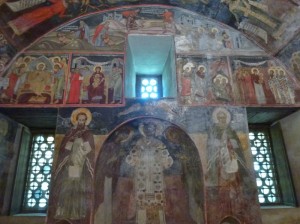 |
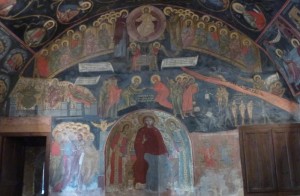 |
I was lucky to catch the 11am bus and arrived at the monastery before noon. The monastery has a 12th-century Archangel Church and a larger 17th-century Church of the Assumption of Our Lady, with 300-year-old iconostases and murals. I paid 6lv to see the 17th-century refectory which is covered with unique paintings and the St Nicholas Chapel. There are still about 10 monks living in the monastery.
I caught the 1pm bus back to town and purchased a 2-pm train ticket for 12.20 lv the following day for Veliko Tarnovo. Things were all set.
In the afternoon, I explored the lovely old town on foot. First, I visited the remains of the Philippopolis Stadium (measuring 74m wide and 250m long) and the Jumaya Mosque built in mid-15th century. On the way back to the hostel, I visited the Phillpoppolis Art Gallery which is a beautifully restored house filled with paintings by Bulgarian artists and impressive furniture.
At 6pm I joined a free walking tour organized by the tourism office which began at the ruins of an ancient Roman forum behind the Post Office. The old town is compact with cobbled stone streets, old trees and many elegant and majestic 18th and 19th– century homes of rich people. I had seen most of the key attractions in the day. But the lady provided me with a brief but comprehensive overview of the development of Plovdiv since the Roman days. She also pointed out a few house- museums worth visiting.
The sun was setting with fascinating fire-red hues. I could not wait and left the guided walking tour to go to Nebet Tepe (ruins of Evmolpias / remains of a Thracian settlement date from 5000BC) at the top of the hill to watch sunset. But it was too late and the sun had almost gone. I had a nice dinner with a cold beer in an open air restaurant. Sadly, I was bitten again.
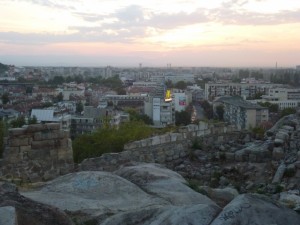 |
The Hikers Hostel is comfortable, cozy and cool. I spent the evening sitting with a window wide open. By the time I went to bed, there were dozens of bites on my neck, my legs and arms. It was so itching that I had to apply cream constantly and could hardly sleep.
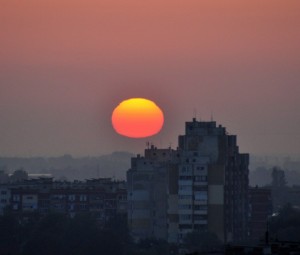 September 27: Plovdiv – Veliko Tarnovo (130 Km)
September 27: Plovdiv – Veliko Tarnovo (130 Km)
I was woken up by sunrays coming through the mosquito net. I jumped out of bed and headed to the highest point of the old town to see sunrise. It was beautiful: I walked for an hour to watch the golden rays shining upon the old city.
I returned to the hostel after 9am for a free breakfast with cereal, milk, bread, cheese, cold meat and jam. I walked for another three hours and got a combined ticket for 5lv which enables me to visit the Roman Amphitheatre built in 114-117 AD with 5,000 seats in two rings of 14 rows each and four house-museums namely Dr Stoyan Chomakov House (1861) with a permanent exhibition of paintings of Zlatyu Boyadzhiev (1903-1976); Bakalov House (19th century); Hindliyan House (1835-1840) and Nedkovich House (1862-1863). Great value!
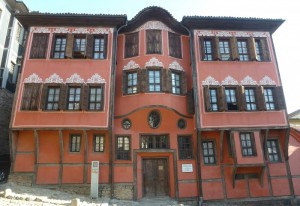 |
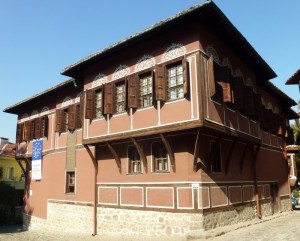 |
The paintings of Boyadzhiev who painted with his left hand after a stroke are most interesting and impressive. I also went to see the Regional Ethnographic Museum, the Icon Gallery which has an impressive collection of icons and the Holy Virgin Cathedral.
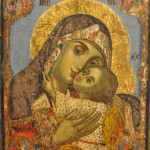 |
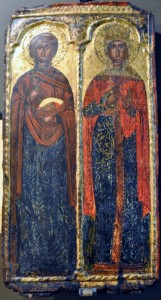 |
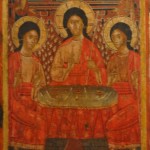 |
I find the train station not user-friendly. I had to carry my suitcase and backpack and walked up to the platform. They were too heavy as I have a bad back. In future, I shall not allow myself to carry more than 20kg.
The train left on time. But to my horror, it stopped at a station around 4:30pm and we were told to get off. A kind old man used sign language to tell me to follow him. We waited for a connecting bus for an hour and I arrived in Veliko Tarnovo at 6:30pm. Had I known about this disruption, I would have taken a bus to Veliko Tarnovo which takes four hours.
My friend helped me to find a taxi to take me to the Hikers Hostel in the old town. I was furious when the greedy taxi-driver dropped me off nowhere near the hostel and asked me for 5lv. I was helpless as it was impossible to pull my suitcase in a cobbled stone street. A few men walked by and I asked them desperately for direction. They did not speak English but went all the way out to help me. They called the hostel and finally found Andrew, the hostel attendant who came to fetch me.
The hostel is situated near the top of the old town. It is quiet, nice and clean and has a big terrace. The moon was round and bright and I felt peaceful and at home.
Andrew, an Englishman who is a year younger than me, has lived in Bulgaria for ten years. We had a cold beer and a nice chat. On his recommendation, I went to a local restaurant to have a hot-pot which is cheap and tasty! But I had to wait almost an hour. I hate wasting time in this way and did not go out for dinner again.
There was no other guest at the hostel. I paid 10euro for a bed but had the whole room! The bed was clean with a firm mattress. I had an excellent sleep.
September 28: Veliko Tarnovo
I did not get up till 9am. After a leisure breakfast, I spent two hours working on my website. The place was so comfortable and quiet that I could spend the whole day without going out. I made an effort to go out to see the city which is Bulgaria’s old capital and the site of great historical battles. It is also one of the country’s hottest places in the summer.
Tarnovo came into prominence in 12th century. In 1185, local Boliar (an aristocratic title) brothers Ivan Assen and Peter declared independence from the Byzantine Empire in Tarnovo. After a two-year battle, the brothers won and establishing the Second Bulgarian Kingdom with Tarnovo as the capital. The city was built on three hills namely Tsarevets, Trapezitsa and Sveta Gora. The kingdom came to an end in 1393 when the land came under the Ottoman Empire.
As the Empire’s strength waned after 500 years of dominance, Bulgaria was liberated in 1877. Tarnovo was the capital for two years before ceding the title to Sofia. Prince Ferdinand I declared the independence of Bulgaria from the Ottoman rule in the 40 Holy Martyrs Church on September 22, 1908. The word ‘Veliko’ meaning ‘great’ was officially added in 1966.
The major sights include the Tsarevets Fortress, the Samovodska Charshia (market) which is lined with little craft shops, the 40 Holy Martyrs Church and Arbanasi, a historical architectural reserve 4km uphill from Veliko Tarnovo.
It was hot: the temperature must be around 35°C. I started with the fortress which was built at a most strategic location along and above the Yantra River overlooking the surrounding areas. The fortress is enormous with ruins of the palace and a large Patriarch’s complex. The Patriarch Church of Ascension has been restored with modern and dramatic murals with dark hues painted by Teofan Sokerov in 1985.
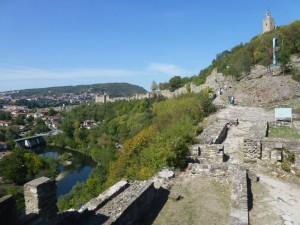 |
It was almost 1pm when I left the fortress. I walked downhill to Assenova Mahala where the craft folks lived in the medieval time to see a few old churches. I stopped at the 40 Martyrs Church an elongated six-columned basilica constructed in 1230. There are several columns (including the Omurtag’s Column, Asen’s Column and the Border Column) with inscriptions – they are the most significant historical records of the Bulgarian Empire’s most significant historical records. The church was badly damaged by an earthquake in 1913.
I crossed the bridge and hoped to visit the Church of St Dimitar where Assen and Peter declared independence from the Byzantine Empire at the church’s consecration in 1185. But it was closed.
When I saw a taxi passing by, I stopped it and asked the driver to go to Arbanasi. The honest taxi driver only asked for 4lv. Arbanasi is picturesque sitting on top of a hill overlooking the Veliko Tarnovo with many beautiful and large houses. Exiled Albanian Christians settled there in the 15th century and the town had since developed into a wealthy trading town and poplar summer residence for the rich till the end of the 18th century.
I was tired and went straight to a restaurant to have lunch. The waitress recommended a local dish like a stew with chicken liver. It is tasty but very high in cholesterol.
After having a rest, I felt better and went to see the Konstantsalieva House originally built in 17th century and beautifully restored. The lower floor was built in stone while the upper floor and living quarters are timber construction. Like many of the houses I had visited before, the living rooms have large windows and usually have bench/sofa on the three sides with colourful hand-made carpets on the floor. Then I went to the 16th-century Nativity Church, the oldest in Arbanasi. Every inch of the interior of the church is covered in paintings and frescoes dating back to the 17th century. There is a chapel for ladies and another for men and the paintings are awesome and well-preserved. The structure of the church and the atmosphere therein reminds me of those I have seen in Cyprus.
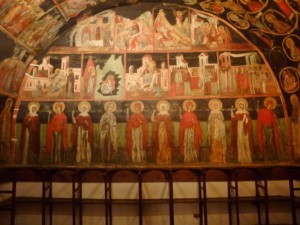 |
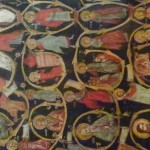 Paintings in Nativity Church Paintings in Nativity Church |
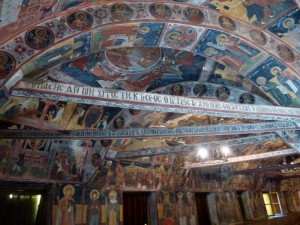 |
St Archangel Michael & Gabriel’s Church is another must-see. But the door was locked and the key-keeper was nowhere to be seen. It was 4pm and I could not find a taxi. The bus would arrive just before 6pm. I had no option but to walk. On my way, I stopped at St Nikolai Monastery (in fact a convent) with the icons of St Nikolai and the Holy Virgin which attract pilgrims from afar.
The walk downhill presented no challenge. But it was dangerous as the road is narrow and the drivers are reckless! By the time I reached the hostel, I was dead tired and did not want to go out to eat. Andrew was preparing a spicy vegetable stew with pumpkin, potatoes, onions and tomatoes. I appreciated his kind offer and had three bowls. What a wonderful and healthy dinner!
That evening, I watched two wonderful ‘sound and light’ shows free of charge from the balcony of the hostel. The magical colours livened up the colossal fortress turning it into a fairyland! I wished I had the explanations so that I could better understand the history of Bulgaria.
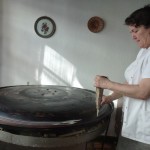 |
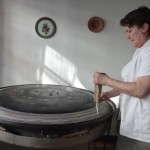 |
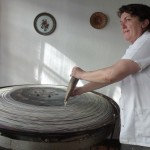 |
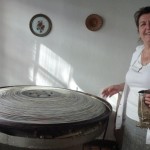 |


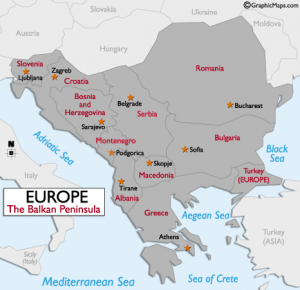
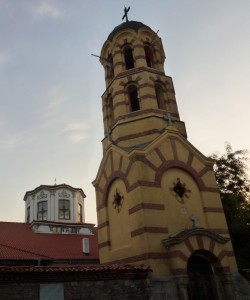
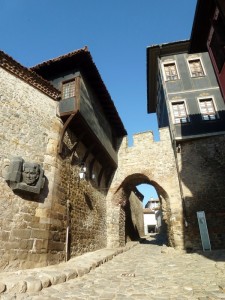
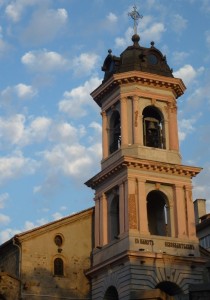
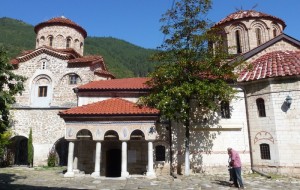
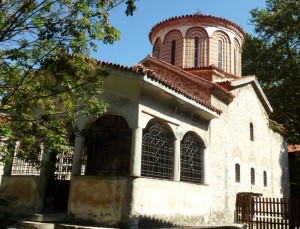
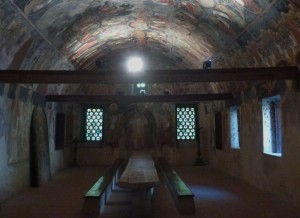
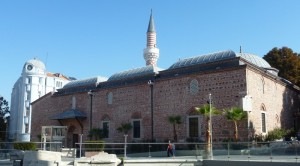
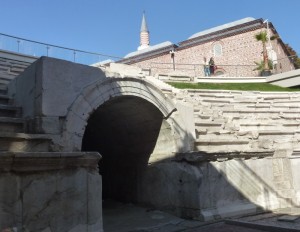
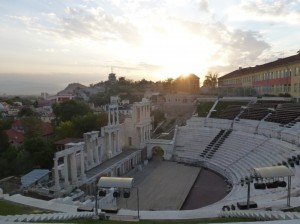
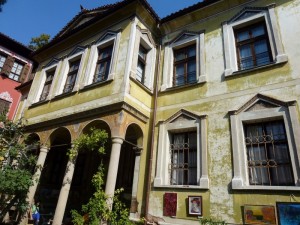
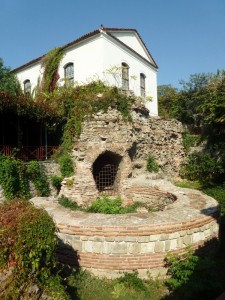
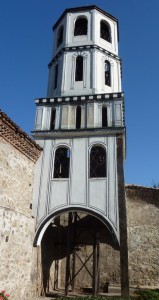
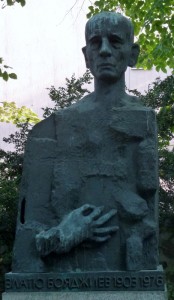
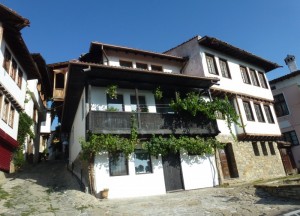
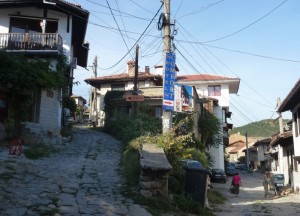
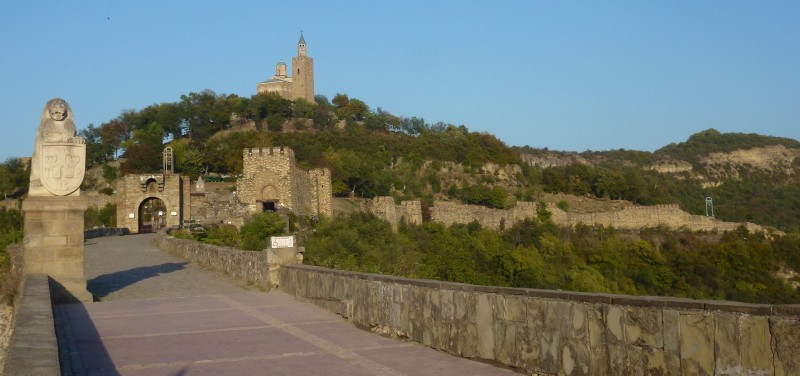
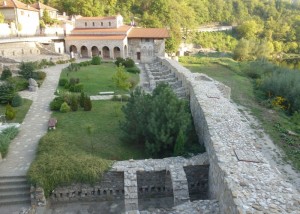
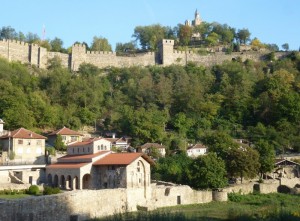
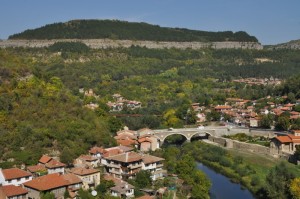
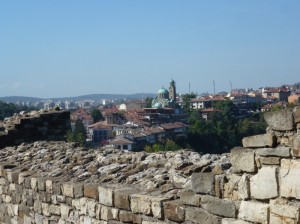
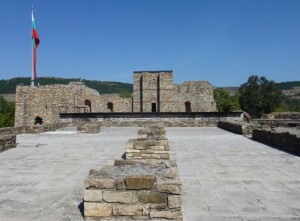
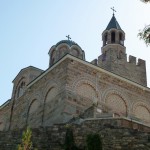
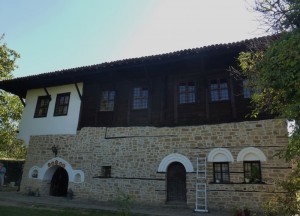
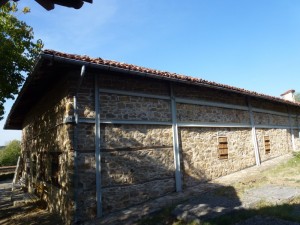
hi, Sarah, i have told Bing and Fei that about you are free on late Oct
let me arrange it la, haha